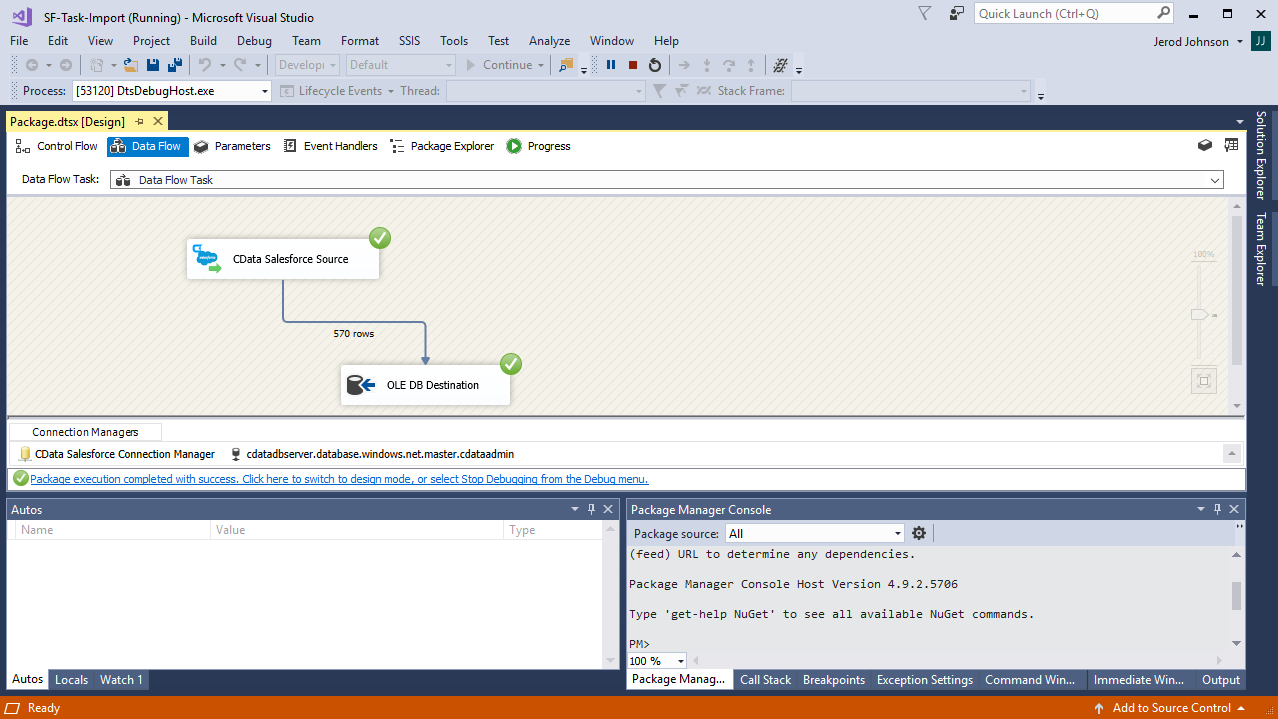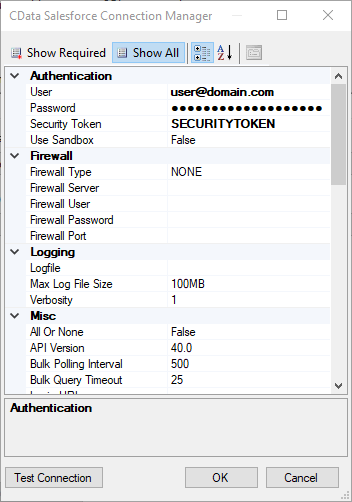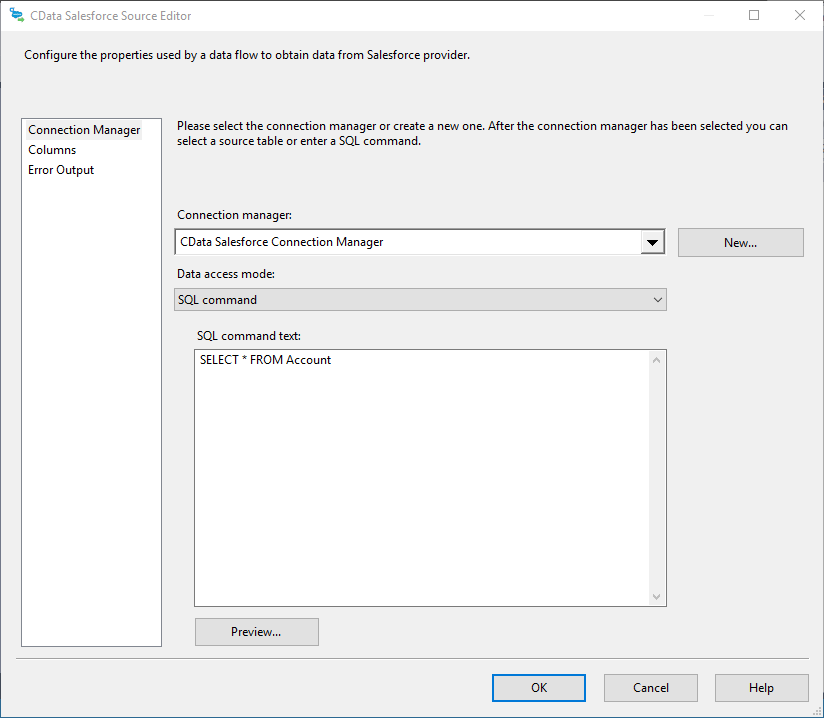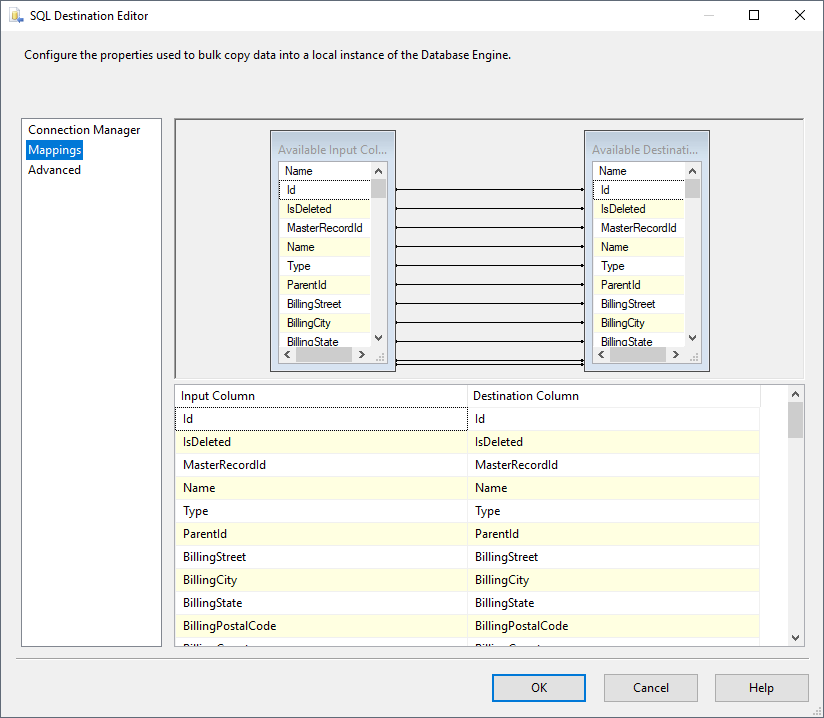Discover how a bimodal integration strategy can address the major data management challenges facing your organization today.
Get the Report →How to Import Airtable Data into SQL Server using SSIS
Easily back up Airtable data to SQL Server using the SSIS components for Airtable.
Using SQL Server as a backup for critical business data provides an essential safety net against loss. Backing up data to SQL Server enables business users to more easily connect that data with features like reporting, analytics, and more.
This example demonstrates how to use the CData SSIS Tasks for Airtable inside of a SQL Server SSIS workflow to transfer Airtable data into a Microsoft SQL Server database.
Add the Components
To get started, add a new Airtable source and SQL Server ADO.NET destination to a new data flow task.
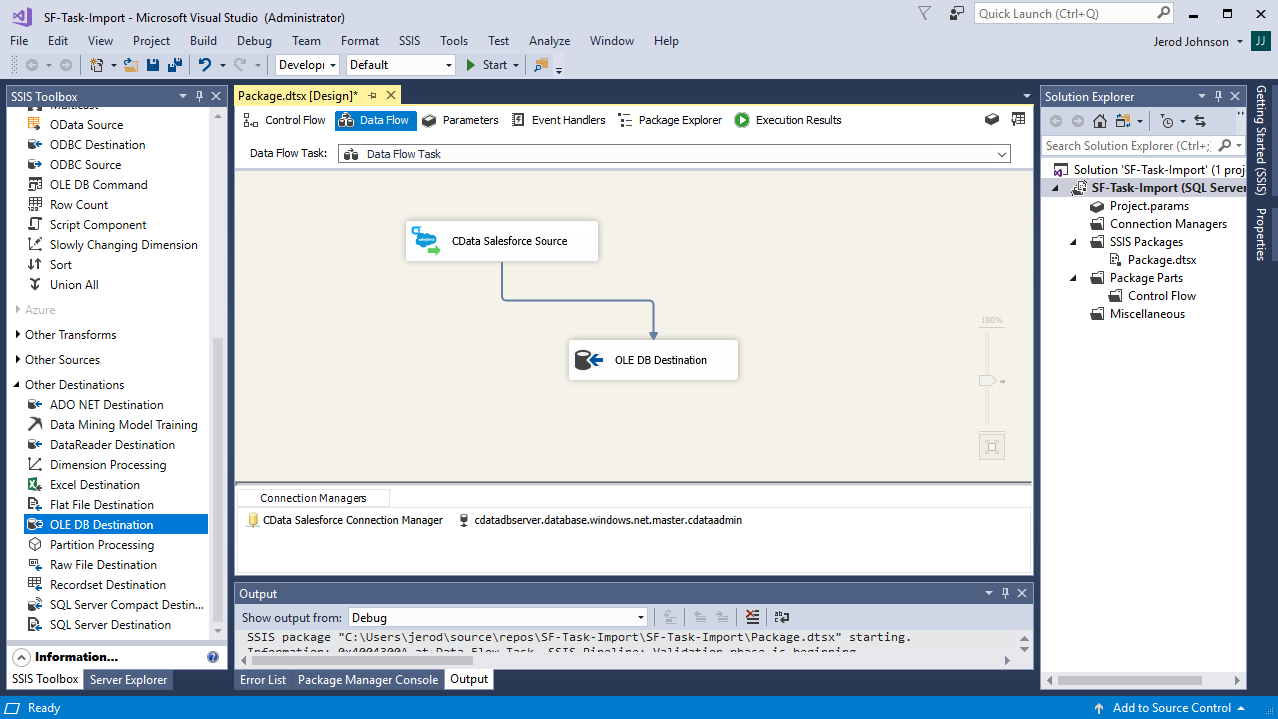
Create a New Connection Manager
Follow the steps below to save Airtable connection properties in a connection manager.
- In the Connection Manager window, right-click and then click New Connection. The Add SSIS Connection Manager dialog is displayed.
- In the Connection Manager type menu, select Airtable. The CData Airtable Connection Manager is displayed.
- Configure connection properties.
APIKey, BaseId and TableNames parameters are required to connect to Airtable. ViewNames is an optional parameter where views of the tables may be specified.
- APIKey : API Key of your account. To obtain this value, after logging in go to Account. In API section click Generate API key.
- BaseId : Id of your base. To obtain this value, it is in the same section as the APIKey. Click on Airtable API, or navigate to https://airtable.com/api and select a base. In the introduction section you can find "The ID of this base is appxxN2ftedc0nEG7."
- TableNames : A comma separated list of table names for the selected base. These are the same names of tables as found in the UI.
- ViewNames : A comma separated list of views in the format of (table.view) names. These are the same names of the views as found in the UI.
![Configuring a connection (Salesforce is shown).]()
Configure the Airtable Source
Follow the steps below to specify the query to be used to extract Airtable data.
- Double-click the Airtable source to open the source component editor.
- In the Connection Manager menu, select the connection manager previously created.
- Specify the query to use for the data extraction. For example:
SELECT Id, Column1 FROM SampleTable_1 WHERE Column2 = 'SomeValue'![The SQL query to retrieve records. (Salesforce is shown.)]()
- Close the Airtable Source control and connect it to the ADO.NET Destination.
Configure the SQL Server Destination
Follow the steps below to specify the SQL server table to load the Airtable data into.
- Open the ADO.NET Destination and add a New Connection. Enter your server and database information here.
- In the Data access mode menu, select "table or view".
- In the Table Or View menu, select the table or view to populate.
- Configure any properties you wish to on the Mappings screen.
![The mappings from the SSIS source component to SQL Server. (Salesforce is shown.)]()
Run the Project
You can now run the project. After the SSIS Task has finished executing, your database will be populated with Airtable data.
